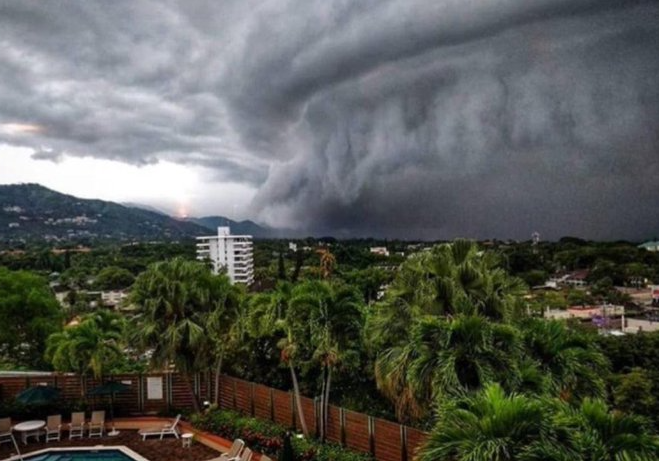Hurricane Helene and Typhoon Yagi are wreaking havoc across the globe, with scientists warning that climate change is amplifying their destructive potential to unprecedented levels. Recent research reveals the alarming ways in which a warming planet is supercharging tropical cyclones—weather phenomena that include both hurricanes and typhoons.
Packing More Punch
Warmer ocean surfaces are a key factor in the intensification of storms, as they release more water vapor, which fuels stronger winds. Additionally, a warming atmosphere can hold more water, resulting in heavier rainfall. According to Michael Mann, a climatologist at the University of Pennsylvania, “On average, the destructive potential of hurricanes has increased about 40 percent due to the 1 degrees Celsius (roughly 2 degrees Fahrenheit) warming that has already taken place.”
In a recent publication in the Proceedings of the National Academy of Sciences (PNAS), Mann advocated for the Saffir-Simpson scale to be revised to include a “new class of monster storms”—Category 6, which would feature sustained winds exceeding 192 miles per hour (308 kph). Experts believe climate change contributed to Hurricane Helene reaching Category 4 status, with record oceanic heat content providing ample fuel for the storm’s rapid intensification.
Rapid Intensification
The phenomenon of “rapid intensification,” defined as a hurricane increasing in strength by 30 knots within a 24-hour period, is becoming increasingly common. Karthik Balaguru, a climate scientist at the Department of Energy’s Pacific Northwest National Laboratory, explained that if this intensification occurs close to the coast before landfall, the effects can be devastating. His recent research in the journal Earth’s Future demonstrated a global increase in the rates at which storms intensify near coastlines.
Several factors contribute to this trend. Warming climate patterns are reducing wind shear—variations in wind speed and direction with height—along both the Atlantic Coast of North America and the Pacific Coast of Asia. Balaguru noted, “When you have strong wind shear, it tends to tear apart the core of the storm.” Additionally, climate change is driving higher humidity levels along coastlines compared to the open ocean, which may be due to land heating faster than water, leading to changes in pressure and wind circulation that funnel moisture into the mid-troposphere, where storms can access it.
Moreover, rising sea levels, which have increased by about a foot over the past century, mean that cyclones are now operating from a higher baseline, amplifying storm surges, as noted by Florida’s state climatologist, David Zierden.
How Often?
While research on the impact of climate change on the frequency of cyclones is ongoing, studies suggest it can either increase or decrease occurrence rates depending on the region. Particle pollution from industrial, vehicular, and energy sources can block sunlight, partially offsetting the warming effects of greenhouse gases.
Hiroyuki Murakami, a physical scientist at the National Oceanic and Atmospheric Administration, found that particle emissions in the U.S. and Europe peaked around 1980. Their subsequent decline has coincided with a rise in hurricane frequency in the Atlantic. Conversely, high pollution levels in China and India may be suppressing storm frequency in the western Pacific.
Another study led by Murakami indicates that human activity has heightened tropical cyclone activity off Japan’s coast, increasing the risk of rare precipitation events in the country’s west through frontal rainbands—even when the storms themselves do not make landfall.
This year’s North Atlantic hurricane season was initially forecasted to be highly active, but meteorological factors created a lull from August through September. However, as Mann pointed out, “we’ve seen a dramatic ramp-up over the past week.” With hurricane season continuing until November 30, experts stress that the threat is far from over.



